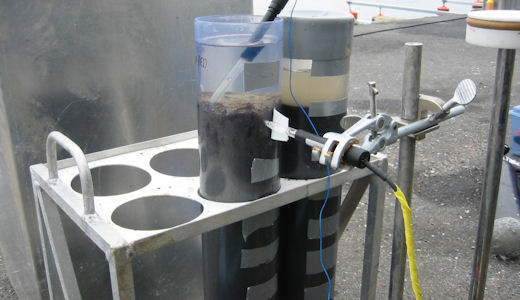
- WP3 Measuring environmental parameters in sediment cores. Photo D. Gregory National Museum of Denmark
About SASMAP
SASMAP’s purpose is to develop new technologies and best practices in order to locate, assess and manage Europe’s underwater cultural heritage in a more effective way than is possible today. SASMAP will take holistic- and process- based approaches to investigate underwater environments and the archaeological sites contained therein. This is necessary regardless of whether or not investigations are research driven or in connection with sub-sea development. Investigations of underwater heritage which are associated with subsea developments in Europe often require pre-disturbance studies to comply with the Treaty of Valletta (1992).
Cost effective methods to locate and assess the dimensions of archaeological sites both on and beneath the seabed are essential. The presence and extent of potential threats to archaeology must also be determined. Threats may arise from the natural physical environment including strong currents, from manmade hazards such as dredging, from construction work, fishing, installation of pipe/cable lines and development of recreation centres. The stability of the site and the state of preservation of the artefacts present must also be assessed. The various assessments provide information on how best to approach or manage a site. If the physical and bio-/geochemical environments are unstable or pose a threat to the site, the opportunities for stabilising it in situ must be determined. The options for monitoring the continued integrity of the site must be identified. If none exist, it needs to be determined whether areas can be identified that need to be excavated, or sampled non-destructively, before information is lost.
SASMAP will benefit the management of underwater cultural heritage in Europe and in the rest of the world by providing valuable tools to plan the preservation of offshore archaeological sites and their contents in accordance with both the Treaty of Valletta (1992) and research driven investigations.

